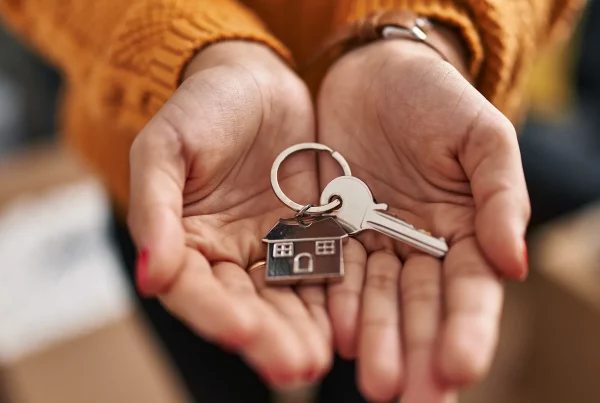Subprime Mortgage Loans: Redefine Possibilities. Also known as nonprime mortgages, provide pathways for high-risk borrowers previously powerless in the financial landscape of homeownership. Overall, getting approved for a mortgage can be tricky, especially for borrowers with low credit scores. Coupled with the intimidating realm of mortgage financing. Many first-time home buyers need the direction of an expert real estate funding professional. As a solution, financial institutions have crafted ideal lending solutions for almost every dynamic.
First, let’s explore the mortgage market and unravel the complexities of buyer-qualifications for home loans. Speaking about complexities, we will break down the commonly used terms regarding loans and nonprime mortgages. Let’s briefly journey through history to see how subprime mortgage loans affected the American housing market in the past to safeguard the experience of finding the perfect subprime lender today.
Navigating Borrower Characteristics:
Imagine a world where financial limitations became the stepping stones to a brighter horizon. A few bad economic decisions in the past don’t signify a lifetime of living in a ceaseless rent cycle. Subprime mortgage loans, rebranded in today’s market as nonprime mortgages, favorably turn the tide. Since nonprime loans cater to borrowers with less-than-ideal credit histories, they open a world of possibilities for serious borrowers ready to commit to their financial responsibilities.
Lenders run full credit reports on potential borrowers. They pull scores from all three major credit bureaus. In turn, they use the median score from Equifax, Experian, and TransUnion. Credit scores range from 300-850. Credit scoring agencies like FICO use these credit histories to help determine a potential borrower’s credit risk and whether to lend money or credit.
Identifying Subprime Borrowers:
FICO scores determine credit eligibility for various purchases, not just mortgage loans. Consequently, any credit score below 600 is rated as subprime, indicating a repetitive history of a borrower’s inconsistent payment history and delinquencies. Namely, a poor credit score ranking greatly contributes to loan denial. Past foreclosures, bankruptcy, low income, and inconsistent work history are additional key indicators of high credit risk.
Conventional Loans:
Conventional loans have two types: conforming and non-conforming. Many conventional loans are conforming loans. A conforming loan is a mortgage that must adhere to The Federal Housing Administration (FHA) guidelines. The FHA’s primary lenders are Freddie Mac and Fannie Mae. Since the Federal government insures these loans, standards, and guidelines are attached for both the borrower approval process and the property. Chiefly, the property guidelines ensure safety and structure. Meanwhile, the approval guidelines for borrowers vary between loan products. As a solution for nonprime borrowers, the FHA offers loan programs that may be accessible to borrowers with lower credit scores.
In turn, a non-conforming loan does not conform to the Fannie Mae and Freddie Mac guidelines. Lenders with these types of loans must keep these loans for more extended periods. Regularly, these loans have higher interest rates, and the borrower will need higher credit scores since these loans come at a higher risk to the lender. Additionally, they sell these loans to investors in the open market. Due to their competitive environment and borrower risk, they require fewer property regulations. Frequently, non-conforming loans fund house flipping and investments.
How to secure a conventional loan:
Gross monthly income – (Total monthly debt = DTI percentage. DTI should be 43% or less
Credit score 620 or greater
Credit histories need to be clean, timely monthly payments
Proof of down payment requirements
Proof of income and work history (two consecutive years or more)
Down payment and closing costs
Subprime Lending’s Role in the Housing Market:
Let’s start by defining the key players in the game—Subprime Mortgage Loan types:
Fixed-rate mortgages. Naturally, consumers want to have consistency when it comes to monthly payments. Hence, the ever-popular fixed-rate mortgage loan. The interest rate is set and doesn’t fluctuate throughout the life of the loan. Commonly, conventional mortgage loan terms range between 15-30 years, whereas fixed-rate subprime mortgages range between 40-50-year terms.
ARM
Adjustable-rate mortgages (ARM). The market rate initially establishes the interest level of the loan. Frequently, ARMs have between a 5-10-year initiation period. During this timeframe, mortgage payments are consistent. From this point, mortgage payments fluctuate based on the market rate. In most cases, adjustable-rate mortgages have a capped interest rate that limits how high the interest can get within each year or throughout the life of the loan. Subprime borrowers use ARMs when they can’t afford a fixed-rate loan. Given that five to ten years of consistent payment history increases creditworthiness, many homeowners refinance once the ARM matures.
Interest-only mortgages. Much like ARMs, interest-only mortgages allow borrowers to make payments contributing to interest, not the principal amount they owe. Admittedly, the introductory period is favorable; however, once the specified time frame is up, it results in a big monthly increase. Frequently, interest-only mortgages coincide with ARMs, meaning buyers pay interest-only for the initial timeframe, and then principal payments begin with the new interest rate. In light of everything, the low payment attached to interest-only mortgages may sound appealing, but remember, the principal balance is due eventually.
Dignity mortgages
Uniquely, dignity mortgages initially come with a hefty price tag. Upfront, subprime homebuyers are required to put 10% down. Thereafter, they agree to pay a higher interest rate for a specified time. Subsequently, as the loan reaches maturity, and as long as timely payments occur within the first few years, the loan will reach maturity, and the interest will decrease to the current prime rate. Ultimately, the homeowner’s reward for financial responsibility is a long-term interest rate typically reserved for borrowers of pristine credit valuation.
Accessing a Subprime Mortgage Loan:
- Seek out lenders specializing in clients with less-than-ideal credit.
- Search for companies categorized as subprime, non-prime, or non-qualified mortgage (non-QM) lenders.
- Provide pay stubs, tax records, and all documentation to prove financial security for loan repayment.
- Proof of down payment requirements and closing costs.
Here are 10 subprime mortgage loan tips:
Securing the right loan relies on due diligence, financial responsibility, and understanding the potential risks of subprime loans. Happy homebuyers do their research and make decisions based on their individual circumstances and needs. Here are ten tips to assist buyers in their exploration.
- Research lenders who specialize in Subprime Mortgage Loans
- Check out all FHA Loan options
- Prepare ahead by safeguarding credit scores
- Pay off as much credit card debt as possible
- Seek professional financial advice if needed
- Consult with Mortgage Brokers first
- Explore government-sponsored loan program availability
- Research local credit unions
- Always compare interest rates
- Understand loan terms and conditions before signing
Interest Rates and Risk Factors:
Great mortgage lenders are the driving force behind the next real estate financing era. Given the rise of inflation and the lack of wage increases, many Americans are financially taxed to the brink of financial fallout, often leading to subprime borrowers looking for refinancing existing loans or new buyers needing lending options. Subprime mortgage loans offer diverse and accessible housing pathways for everyone.
Admittedly, there are plenty of financial intricacies surrounding subprime loans, and just as every client has their own personalized needs, these unique lending solutions offer newfound lending possibilities. However, when a borrower’s credit score sits below 620, it raises red flags to lenders. Higher interest rates compensate for the lender taking the risk of funding homebuyers with untidy personal finance histories. Yet, underwriting departments nationwide approve loans and unlock doors to homeownership every day.
Amidst these subprime applicants, many are ineligible for the types of subprime mortgages offering fixed interest rates. Instead, many loans often come with higher rates. Indeed, additional associated risk factors often accompany nonprime loans. Although many homebuyers refinance their loans once their home equity and credit scores improve.
In turn, this makes the initial risk of nonprime lending negligible. Unquestionably, exceptional credit scores are ideal for securing lower interest rates; however, higher-risk borrowers should not shy away from homeownership simply because of impaired credit. After all, subprime lenders have been helping countless American homeowners realize their dream of homeownership. Undeniably, finding the best lender is critical to ensure borrowers get the type of loan that suits their unique lending situation.
The Historical Timeline of subprime mortgage loans:
As a result of the 2008 housing crisis, which spanned from 2004 and led well into the mid-2000s, just the word “subprime” is enough to make many financial experts pull away from the bargaining table, justifiably. Here is what happened. Due to the questionable practices and predatory climate of many lenders, banks, insurance companies, and credit-ranking institutions, Americans secured loans and mortgage payments they simply could not afford. Which led to a housing frenzy that drove home prices through the roof. According to the Federal Reserve, average home prices across America doubled between 1998 and 2006.
The ultimate consequence of risky lending practices fell back on the shoulders of the American people. Amidst the fallout, adjustable and variable-rate mortgages started maturing, resulting in high interest rates and increased monthly mortgage payments. In turn, homeowners now wouldn’t even qualify for the original loan, let alone a refinance. Consequently, home values plummeted, and foreclosures became commonplace. Ultimately creating a global financial crisis. At this point, multiple financial institutions were crumbling, and the need for bailouts rose. Eventually, this led to the housing market meltdown, the start of the Great Recession.
Regulatory Responses:
In response to the subprime mortgage crisis, governments and regulatory bodies took action. The establishment of the Dodd-Frank Wall Street Reform and Consumer Financial Protection Bureau (CFPB) was a result of the housing market meltdown. Together, they protect the economy and consumers from the abuses of egregious practices and predatory lending. The bottom line is that they ensure banks, lenders, and other financial companies treat homebuyers fairly. In light of everything, the interventions and policy changes that followed are still predominantly in place; these and various other safeguards ensure past mistakes never happen again.
Before putting pen to paper
- Double-check the estimated monthly payment with an online mortgage calculator.
- Read the fine print.
- Look for loan maturity dates & balloon payments.
- Adjustable rate mortgages (ARM) Check maximum interest rate allotment.
- Get innovative. Is this loan the best option? Check FHA credit requirements (Some allow credit scores of 500).
- Are you VA? The Veterans Affairs’ loan requirements are lenient.
- USDA Loans are credit-lenient for those borrowers looking for rural property.
How can expert guidance shape the Subprime Mortgage Loan journey?
If homeownership feels unattainable, the solution is finding the right guidance and lender. Frequently, the financial complexities of mortgage lending necessitate seeking professional advice. Lenders don’t only provide loan qualification. It is common practice for lenders to help with long-term planning and loan repayment strategies before loan applications and documentation are submitted. Expert lenders understand the process of home buying takes time. From performing the initial financial assessment to ultimately signing (It feels like 100 times, if we’re being honest) on the dotted line, Lending professionals can help. Let’s get started, and here is a lender who can help.
The steps are simple:
1. Schedule a Call: An experienced loan officer can discuss your lending needs and guide you through the possibilities.
2. Get Approved: We’ll help you through the mortgage application process and facilitate the steps for approval.
3. Exhale: Put your feet up and feel secure knowing you made the best decisions about your home loan.
With proper guidance, you can get your first home, accommodate your growing family, and start that renovation project—whatever goal is on the horizon. An alliance with Mortgage Insider will give you the confidence to know that your mortgage loan is setting you up for financial success. Mortgage Insiders offers today’s latest financial news and mortgage trends. Check out their channel for current events.





